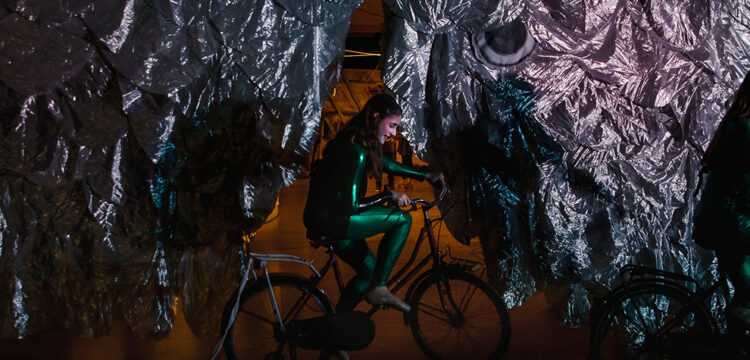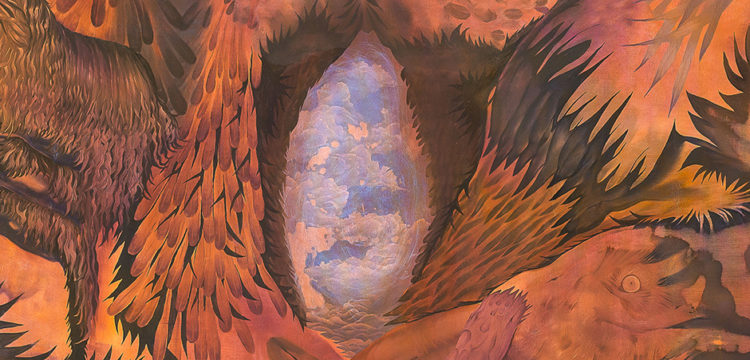Impetuous and Generative
Above the roofs of Taranto: on Post Disaster Rooftops EP03
Post Disaster is a critic learning platform on the condition of the Mediterranean scenario. It aims to shed light on the role of marginal territories within global capital production systems. It invites scholars, designers, thinkers and artists to contribute to a collective investigation through the lens of Taranto, an industrial city that symbolizes the disparities inherent with the western contemporary world. It generates a multidisciplinary exchange by chasing a complexity of visions that goes beyond the disciplinary boundaries.
Giulia spoke to me often about Taranto, about her grandmother who took her as a child to the monumental cemetery where the family owned a chapel. She always had to wear a mask because, she said, of the red earth covering every surface: the gravestones, the stones of the paths, the watering cans, the flowerpots. Her grandfather, or perhaps her great-grandfather, was known to the press because as president of Taranto football he had slapped a referee over a penalty that wasn’t given. The news-clipping, which ended up in the local newspaper, had been laminated years later by Giulia’s father as a sort of family heirloom and was now placed on a bookshelf in the family home in Milan. I have also visited Taranto several times, the first time though, with Giulia. We had passed by one of the sides of the Ilva plant, at the height of a fishmonger, and she lowered the window in a sort of propitiatory rite as an acrid and rotten smell invaded the passenger compartment of the car. A little further on, close to the signs for the cemetery and the popular Tamburi district, a large bridge was completely covered with red soot. That dust seemed to reach everything, coloring it vermilion red.
Of Taranto I also remember the two seas that surround it on both sides, the old city with baskets lowered down from upper floors, the eyes never entirely promising a friendly greeting, and a festival at the port. Mussels—you can find the best mussels here, Giulia repeated—were passed on plastic plates directly from steel pots, to be consumed on the docks and throwing the shells back into the sea. Taranto is beautiful and ugly in my memories, impetuous and tasty, killer and generative, cowardly and stubborn—like any being that tries to make its way into an alien world.
Taranto can also be observed from its roofs, from there the perspective expands into a layering of landscapes: in the background industry surrounds the old city while the “new city” beyond the bridge, develops along the coast.
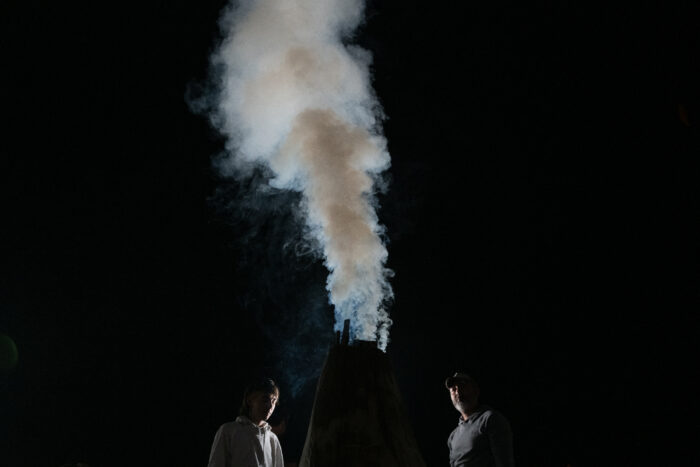
On the roof of a secondary school’s gym, Post Disaster, a spatial, critical and curatorial platform created by a group of architects (Gabriele Leo and Grazia Mappa) and designers (Peppe Frisino and Gabriella Mastrangelo), has established the headquarters of Post Disaster Rooftops EP03, a program of workshops, residences, events and performances spread about the Old Town of Taranto. This year is its third edition, entitled Bodies as Infrastructures.
The project, defined as practice-based, takes shape from the need to explore alternative paths to cultural production, dealing with a territory, that of Taranto, in which the crisis—the announced political, social, and economic “catastrophe”—is not a vision or a statement but an existing condition. Starting from this, from the architectural and social rubble of the city, Post Disaster has conceived a permanent laboratory of cultural criticism which, thanks to the involvement of artists, theorists, architects, and designers, proposes other forms of production, sociality, and care, introducing new narratives and interpretations of the territory.
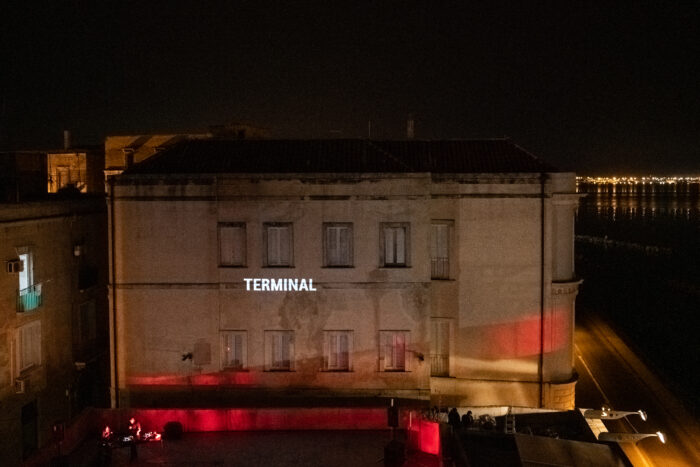
Gabriele Leo tells me how Taranto can be considered a “manifesto city,” an example of the relationship between large infrastructures and local areas, between global extraction processes and their effects on the territories that are part of the production and distribution network. In this, Taranto can be considered more contemporary than other cities: here the industrial transformation is visible, its failure and the ruins from which new forms of collectivity must now reorganize.
As Post Disaster suggests, “Regardless of what the cause of the disaster is, the failure of infrastructure requires adaptation and reaction. The disaster is a glitch in the regulatory functioning of infrastructures, which opens up the need—and spaces of possibility—for new organizing mechanisms for life and models of existence.”
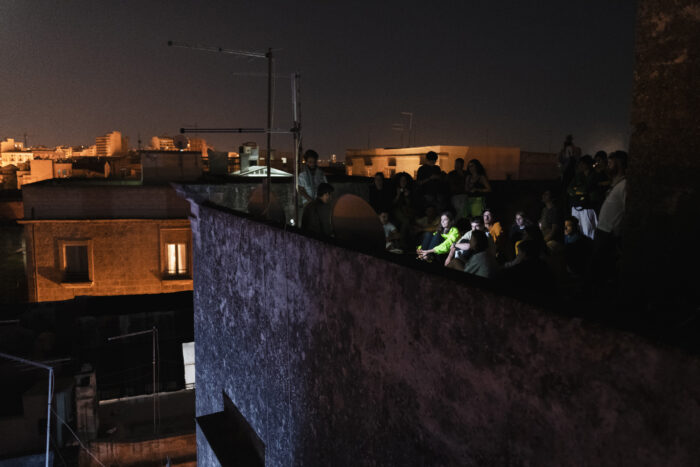
To the production infrastructures that have defined the bodies and the environment of the city since the 1960s—among these the Ilva steel mill is certainly the one that has transformed the territory in the most radical way, destroying ecosystems and causing one of the highest mortality rates in Italy—Post disaster contrasts an idea of “biological infrastructure” capable of reterritorializing common spaces and transforming them into places of co-existence for the living.
The activities they promote range from relational performance practices (Juan Sandoval, Fare immateriale, May 14, 2022; Mara Oscar Cassiani, Spirit X Taranto, curated by studioconcreto, May 18-20-21, 2022; Musarc, The End of the World Service , May 27-29, 2022), site-specific interventions (Gianni D’Urso, Unica fede, curated by studioconcreto, May 18, 2022) and listening sessions (Canti Magnetic, Gran Madre di Dio, May 13, 2022; Invernomuto, Black Med, 2 -3 June, 2022). If the former interact with a more limited audience by finding life-blood in an existing community, the latter allow for broader action capable of fostering wider involvement.
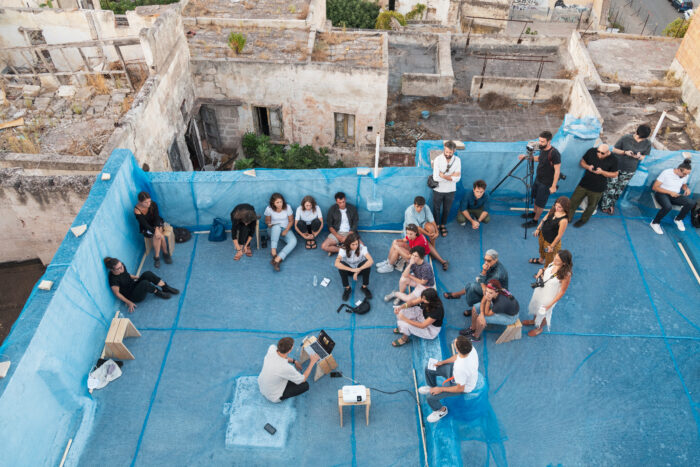
What appears evident, among the proposals put forward, is the attempt at a “poetic reactivation of the erotic body” as Franco Bifo Berardi defines it in reference to the oppression of financial capitalism—in this case it is not only the pervasive and immaterial nature of finance to exercise its power, but the old industrial model with its extremely physical and localized workforce—aimed at a reconsideration of bodies (human and otherwise) as active resources capable of forming social infrastructures parallel and interrelated to existing ones.
At the same time, Post Disaster seems to embrace what Catherine Malabou calls “negative and destructive plasticity.” In a short introductory essay to her thinking, Ontology of the Accident: An Essay on Destructive Plasticity (Polity, 2012), the French philosopher describes traumatic events, brain disease, and sudden aging as moments in which the identity suddenly changes shape placing the person in a position of unrecognizability, of total alienation from the past. Malabou refers to this new “form” as born from the accident, “a strange creature” but also a “vital tear, a threatening turning point that opens another path, unexpected, unexpected and dark.” Recounting the “catastrophe” of an individual, to be extended in this case to the social context, Malabou proposes a different interpretation of the corporeal infrastructure, according to a plastic reaction capacity to the accident (not elastic, as it does not consist in a return to a previous form) which creates a form from destruction. Living in catastrophe does not therefore mean accepting changes at any price as promoted by the idea of flexibility to which our society has accustomed us—from the working environment to our personal lives—but rather giving shape, sculpting, shaping other social conditions, radically renewed.
On the roofs of Taranto, collective exercises are proposed, practices of “self-plasticity” that try to interrupt the passivity that the media narratives of the crisis have helped to fuel. The catastrophe is welcomed as a trauma from which the bodies reorganize themselves, repair their wounds and improvise new forms.
I haven’t been to Taranto for four years. The last time I passed by chance with a group of artist friends returning from a residency spent in Cosenza. As soon as we approached the city, I started my lesson on Ilva: it is four times bigger than the city itself, if until a few years ago you were looking for Taranto on Google Earth, its buildings, the two seas, the bridge, were completely covered by a cloud. It has dramatically increased the number of cancer cases, at least one member of every Taranto family works in the factory, so its possible closure would generate extreme social inequality: you have to choose between health and work, the end. Then I resumed Giulia’s ritual, rolling down the windows. We remained silent as we skirted by some areas of the company with disused tracks and trains, entire areas were abandoned but in the air, we could hear the chimneys working non-stop.
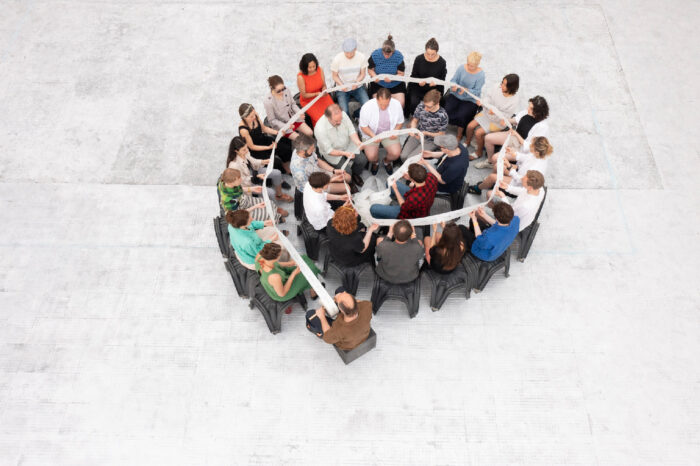
Passive, we witnessed a destruction that we felt widespread, while on the roof of a house in the old city, others delimited their spaces by covering the floor and the parapets with a blue net [2]: that simple gesture introduced a new shape into the urban landscape.
[1] PDR_EP03, BODIES AS INFRASTRUCTURES / CORPI COME INFRASTRUTTURE, curatorial text by Post Disaster for the edition, 2022.
[2] Reference is made to Post Disaster’s project during EP02 A New Abnormal, 2019.




